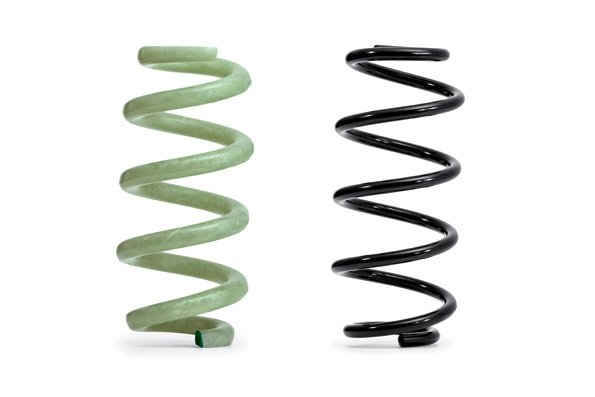Audi is introducing new, lightweight suspension springs made of glass fiber-reinforced polymer (GFRP) in an upper mid-size model before the end of the year.
The GFRP spring, which Audi developed in collaboration with an Italian supplier, even looks different than a steel spring. It is light green, the fiber strand is thicker than the wire of a steel spring, and it has a slightly larger overall diameter with a lower number of coils. However, it is some 40 percent lighter. Whereas a steel spring for an upper mid-size model weighs nearly 2.7 kilograms, a GFRP spring with the same properties weighs just approximately 1.6 kilograms. Together the four GFRP springs thus reduce the weight by roughly 4.4 kilograms, half of which pertains to the unsprung mass. “The GFRP springs save weight at a crucial location in the chassis system. We are therefore making driving more precise and enhancing vibrational comfort,” said Dr. Ulrich Hackenberg, Member of the Board of Management for Technical Development at AUDI AG.
The core of the springs consists of long glass fibers twisted together and impregnated with epoxy resin. A machine wraps additional fibers around this core — which is a few millimeters in diameter — at alternating angles of plus and minus 45 degrees to the longitudinal axis. These tension and compression plies mutually support one another to optimally absorb the stresses acting on the component. In the last production step, the blank is cured in an oven at temperatures of over 100 degrees Celsius.
The GFRP springs can be tuned to their respective task. It does not corrode, even after stone chipping, and is impervious to chemicals such as wheel cleaners. Finally, production requires less energy than the production of steel springs.
Source: Audi
Romain’s opinion:
This innovative technology seems to have many advantages (except maybe the cost). Do you think that the cost for adapting the manufacturing tools has been low enough for the supplier to go on producing this product? Did Audi pay the supplier for these potentially high investments?




















